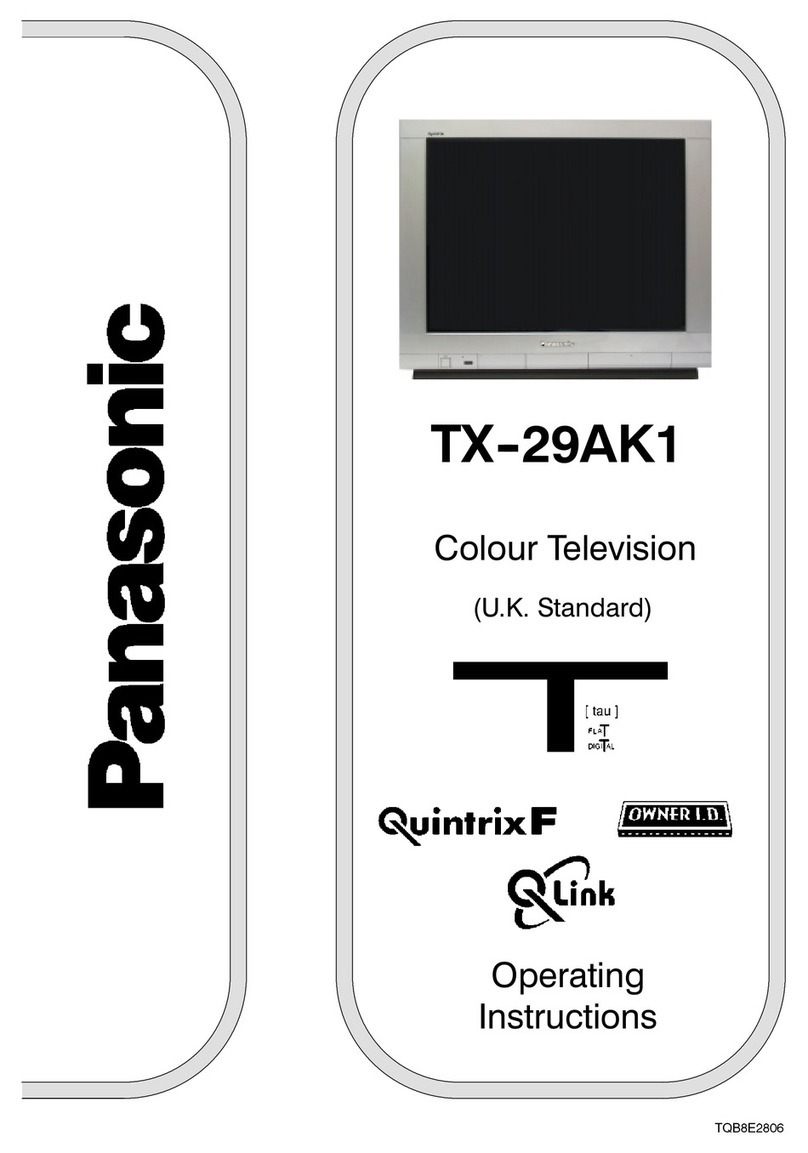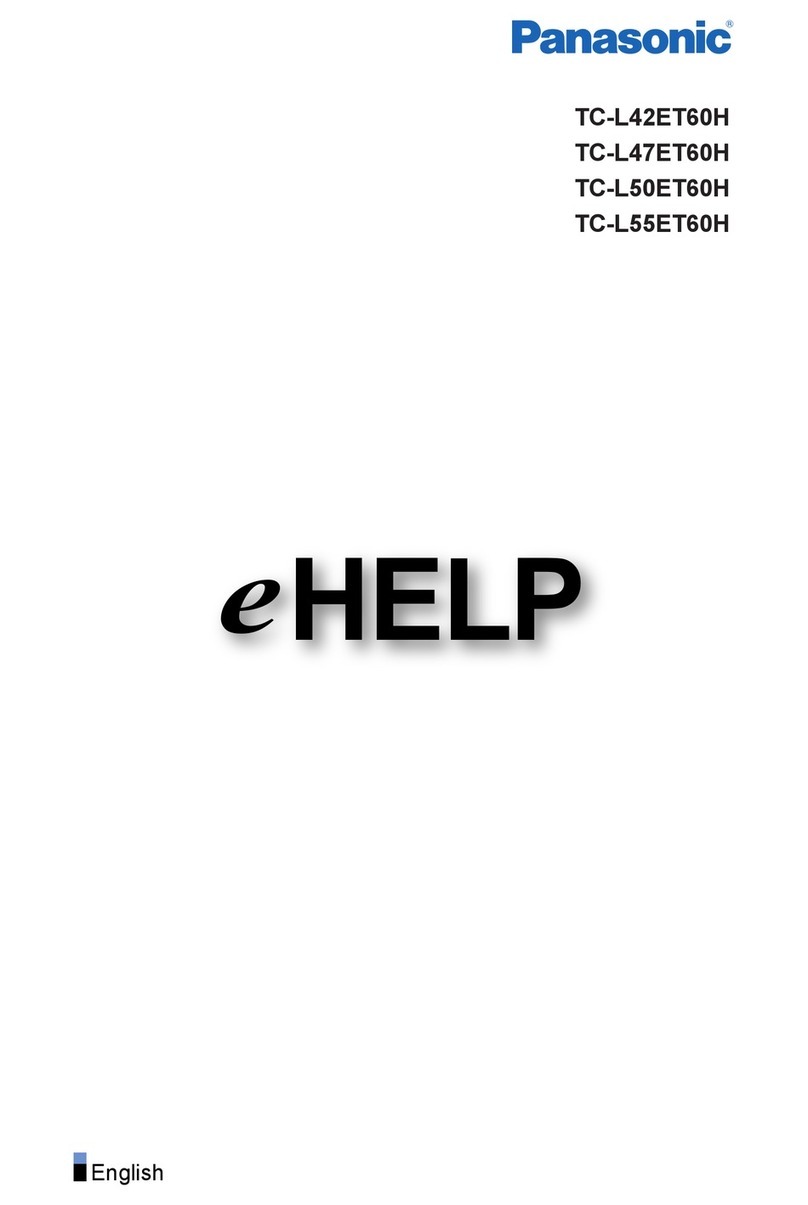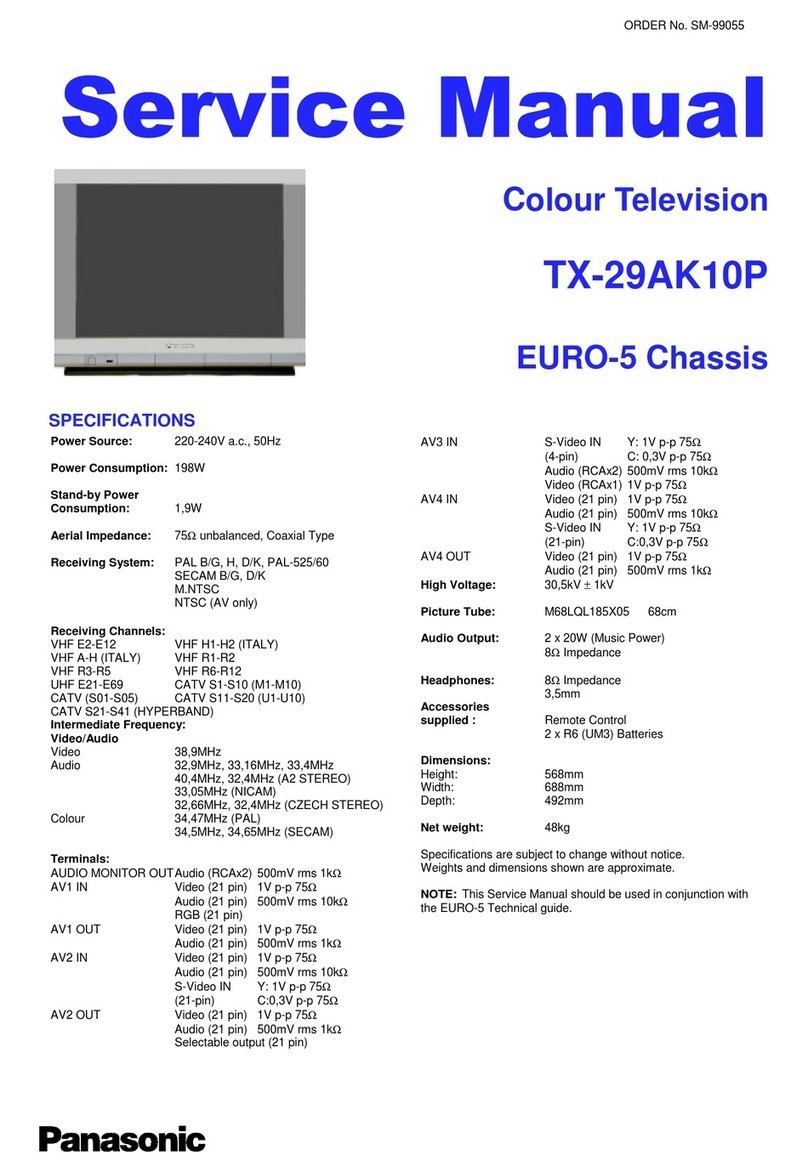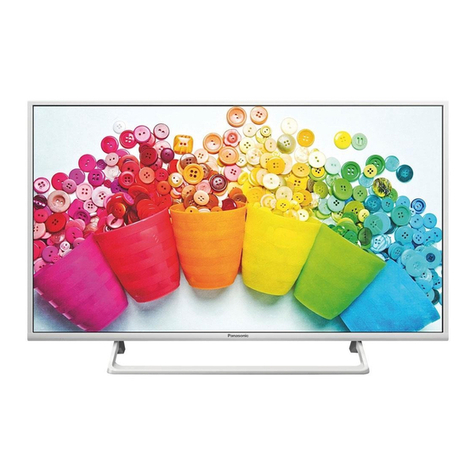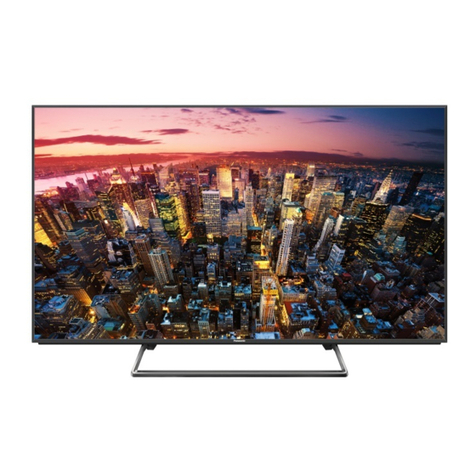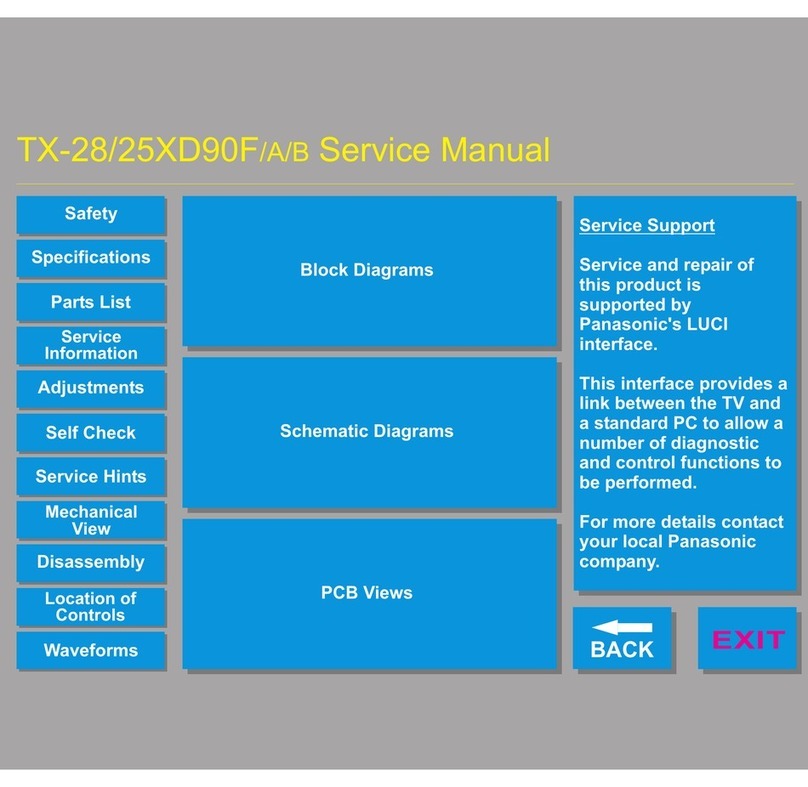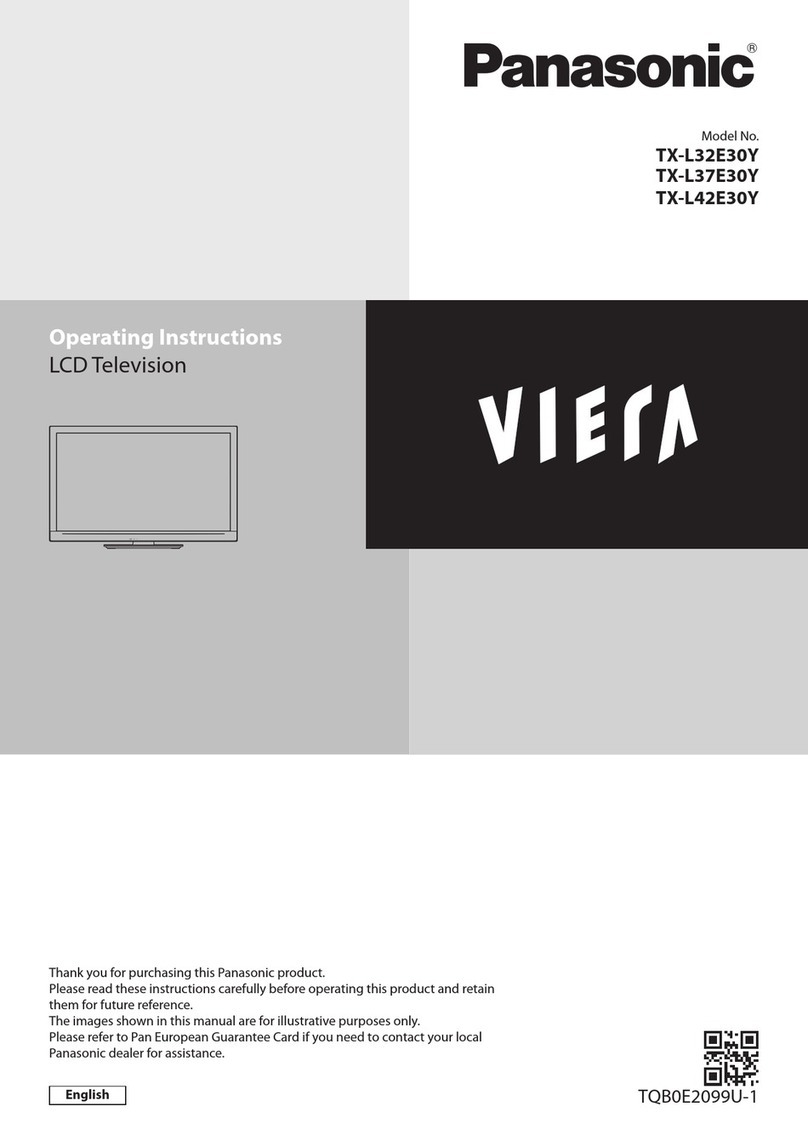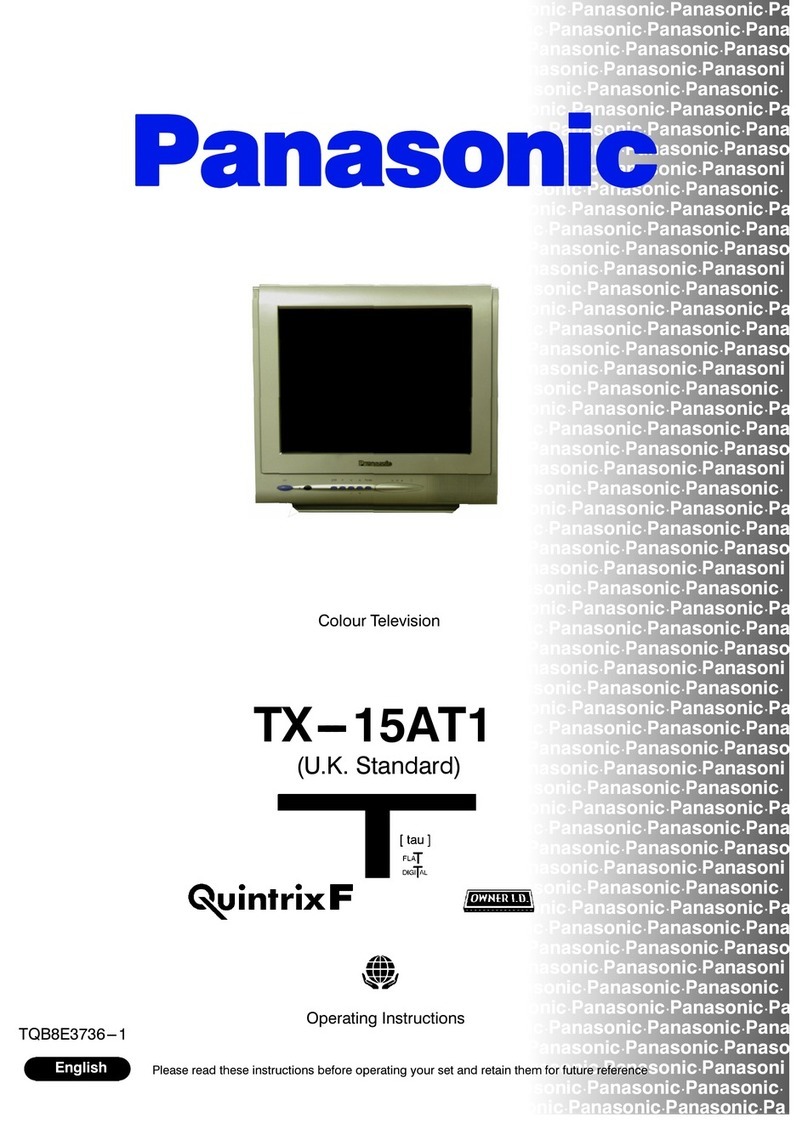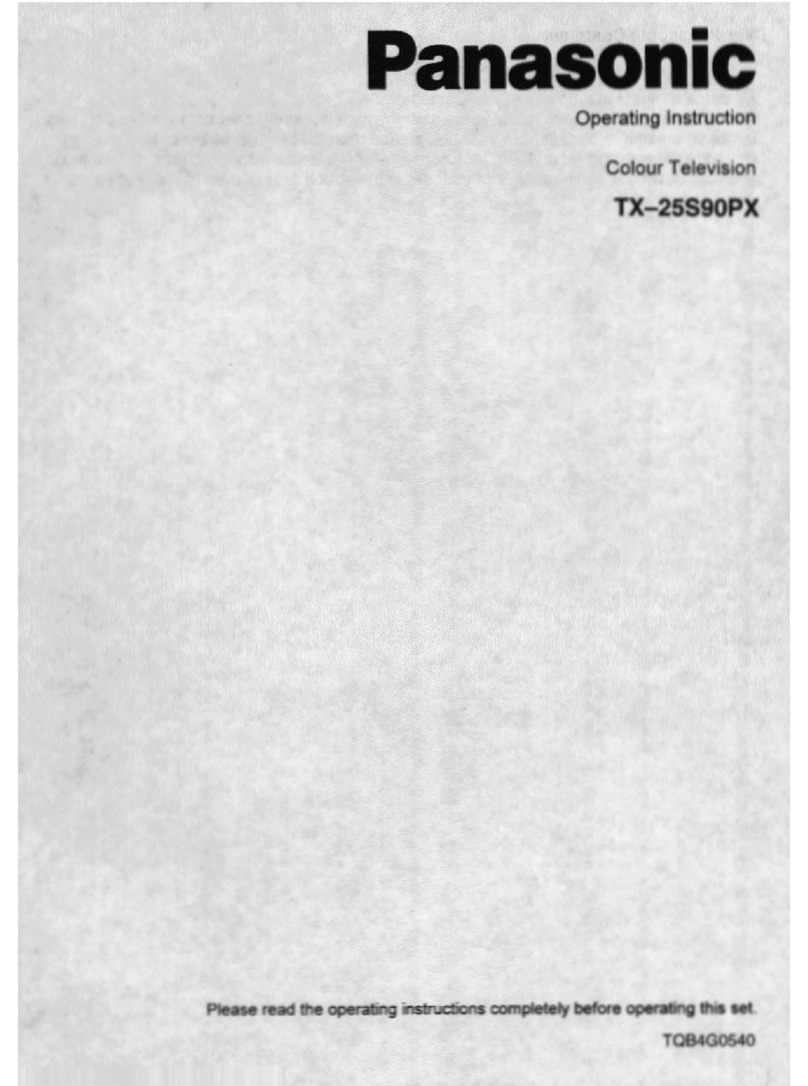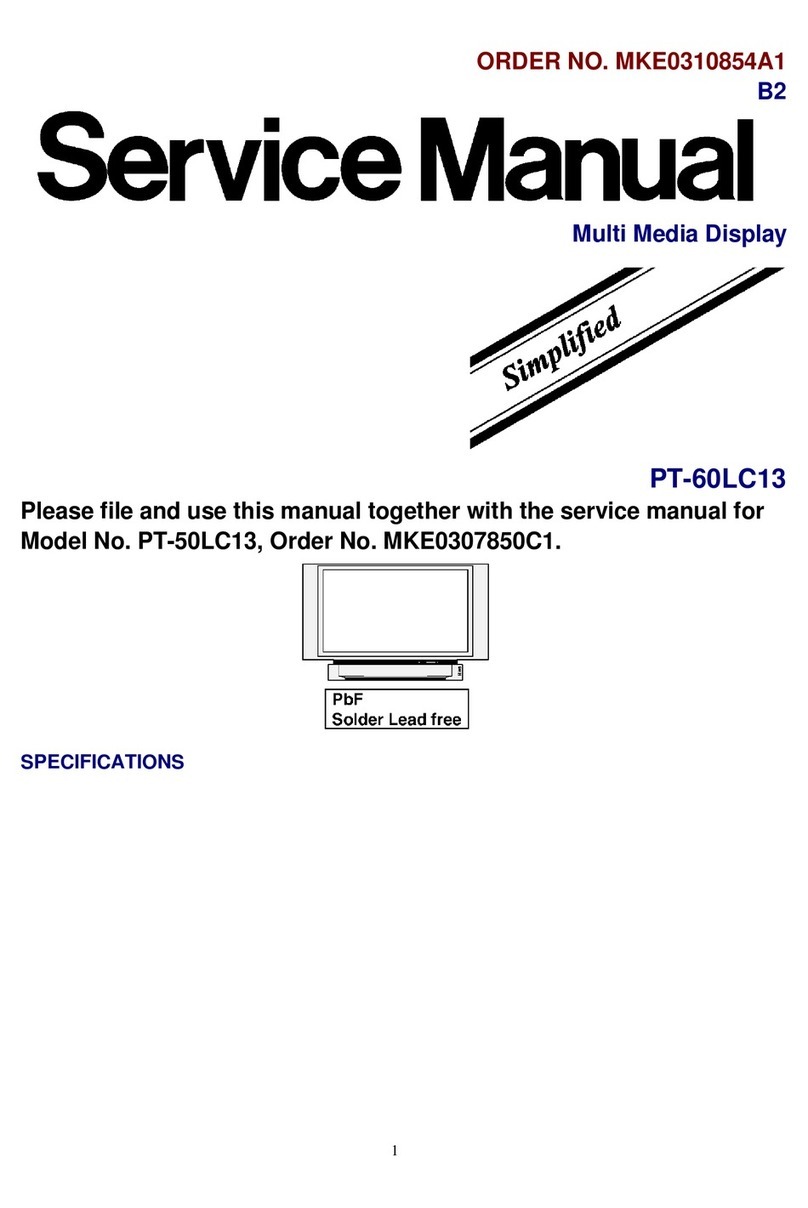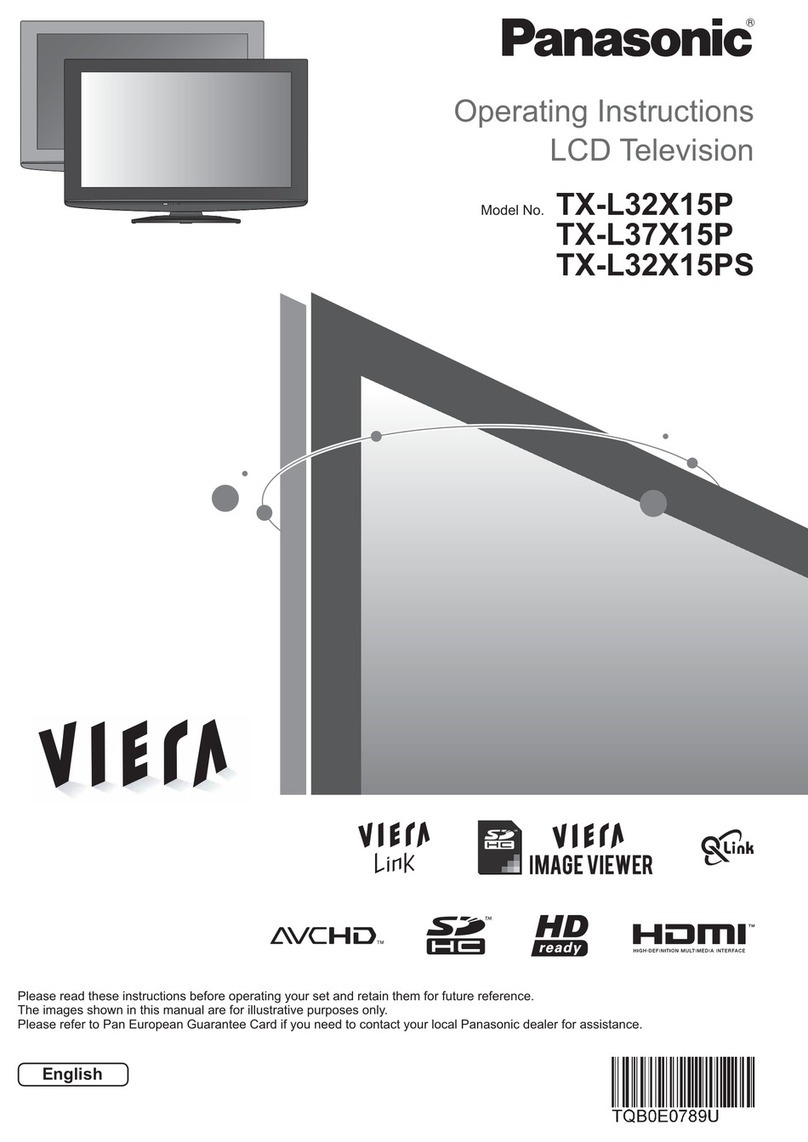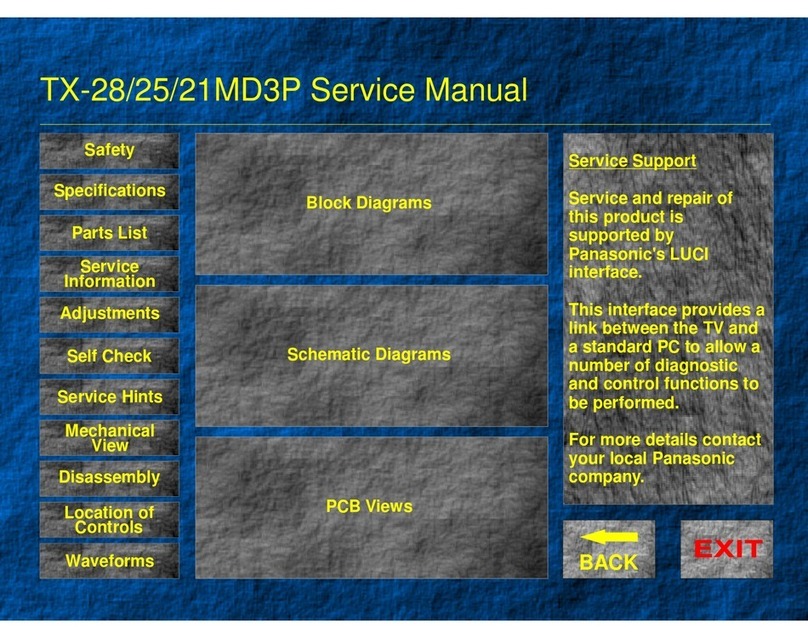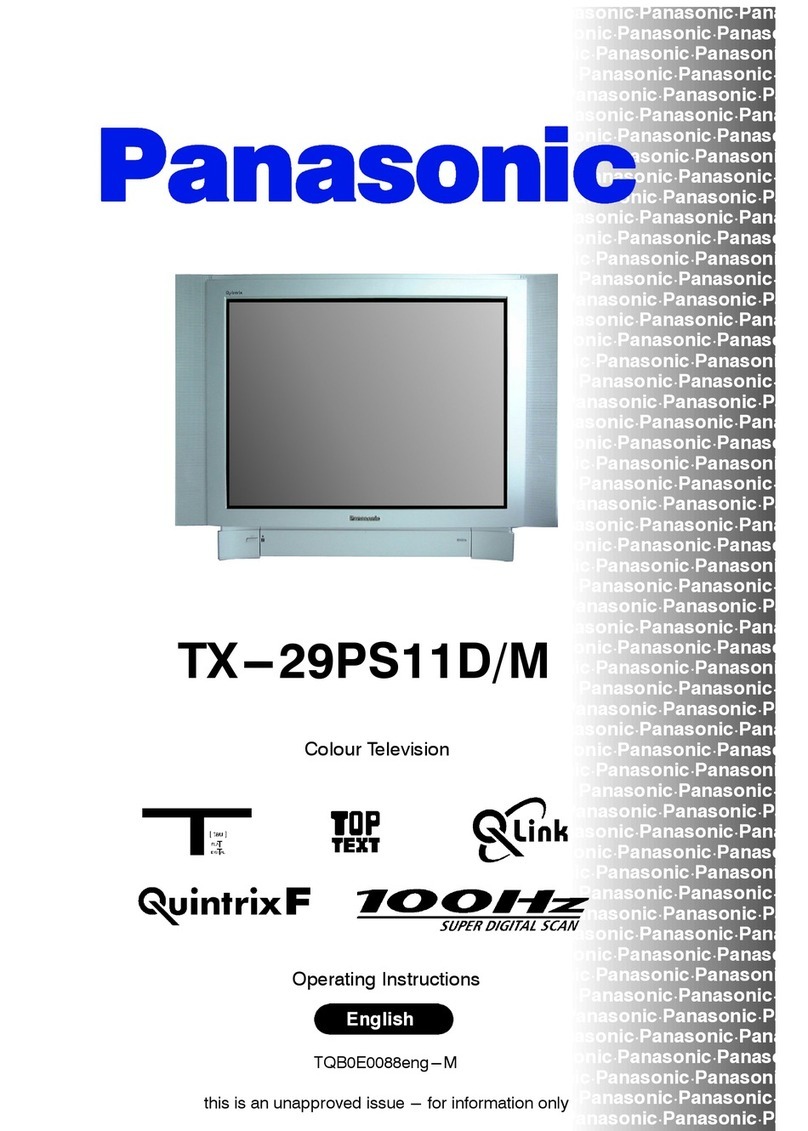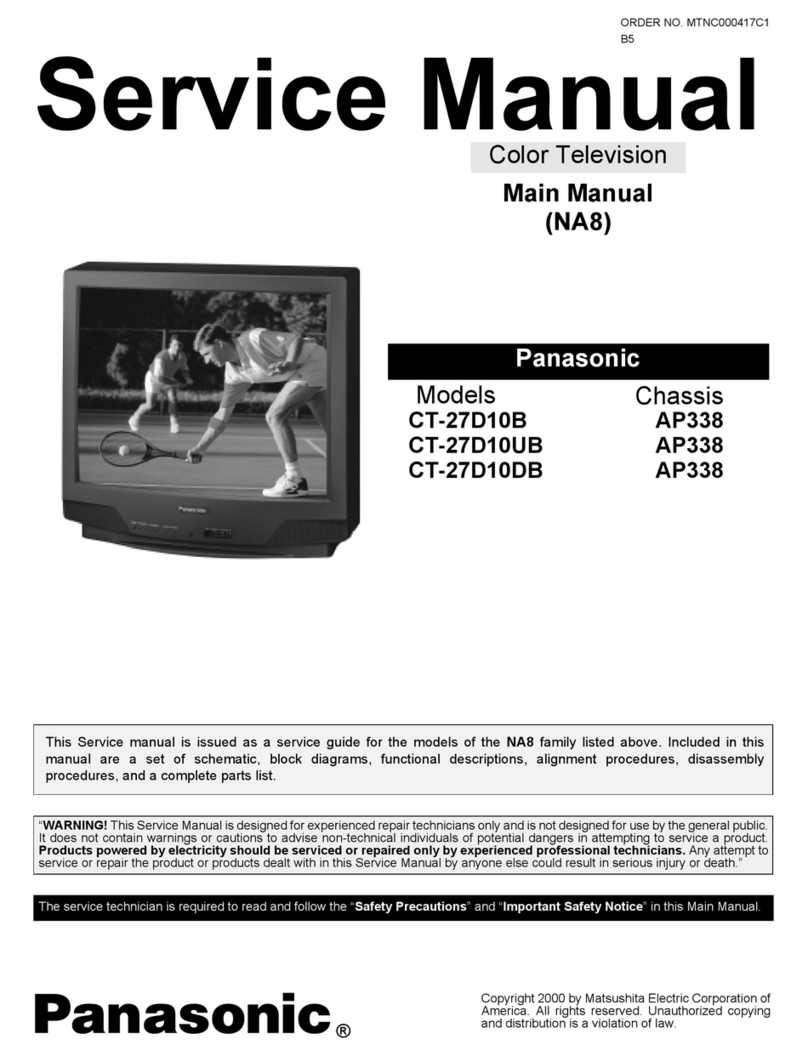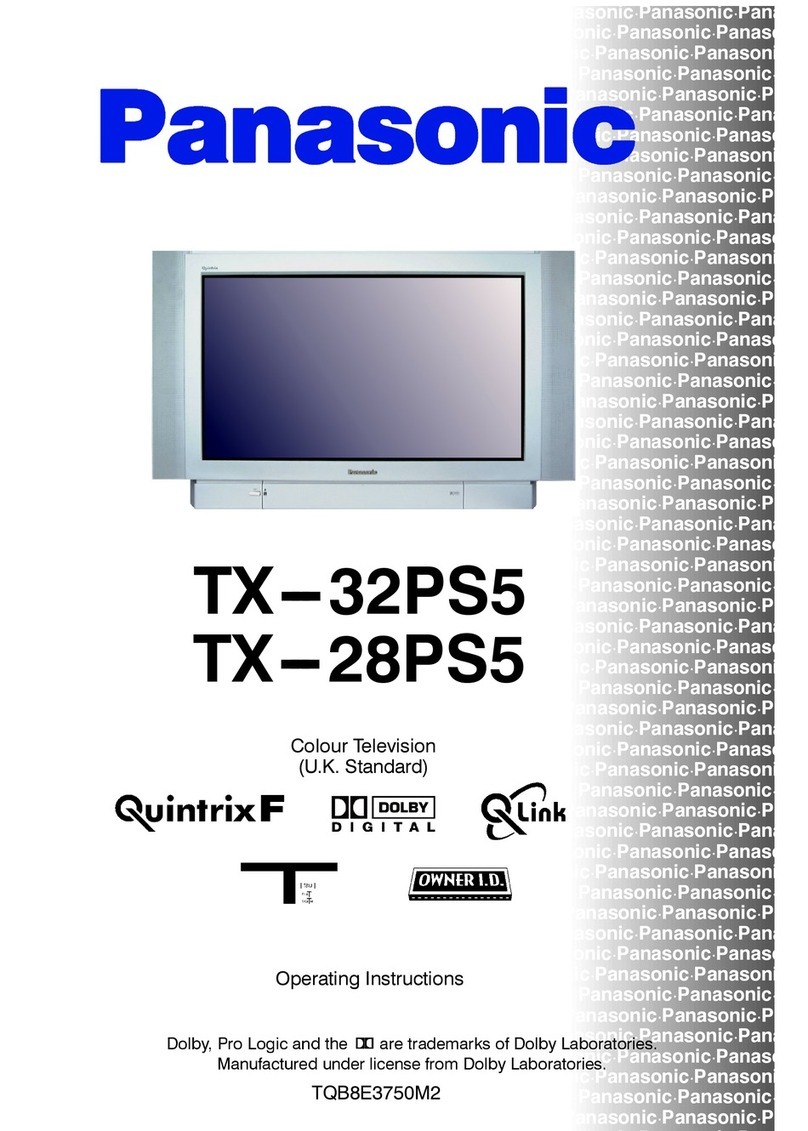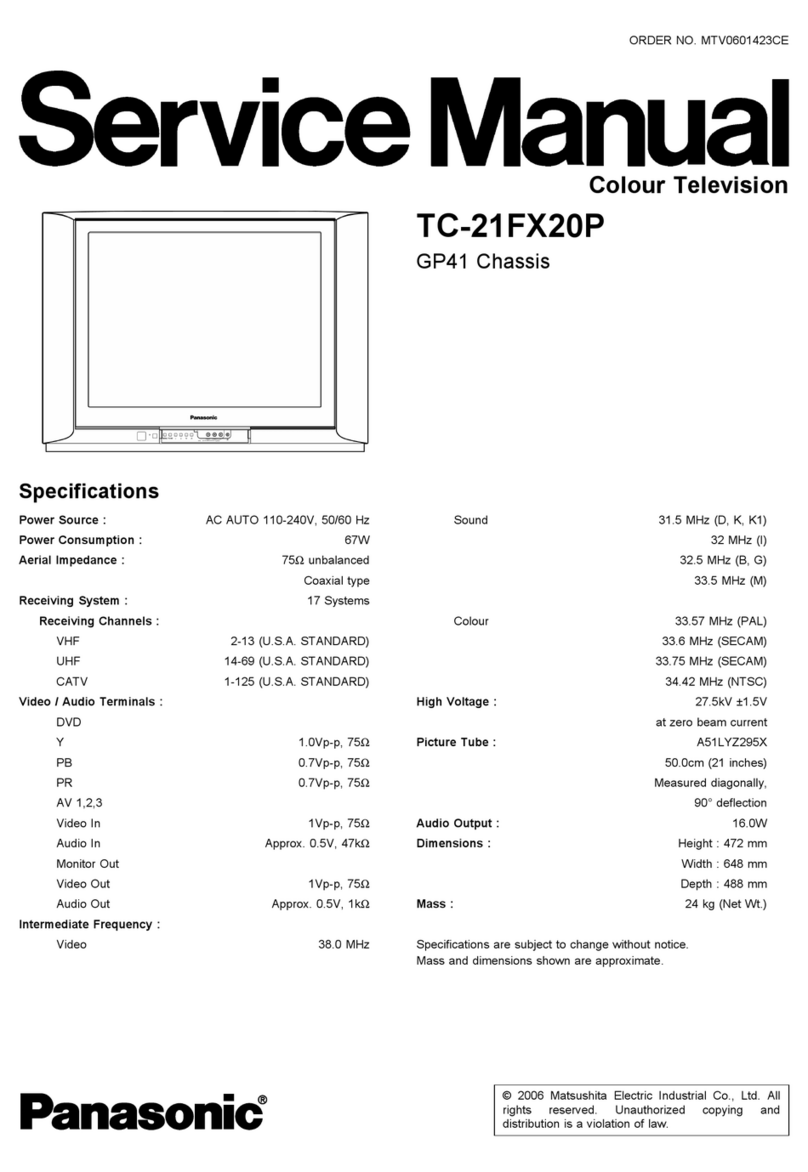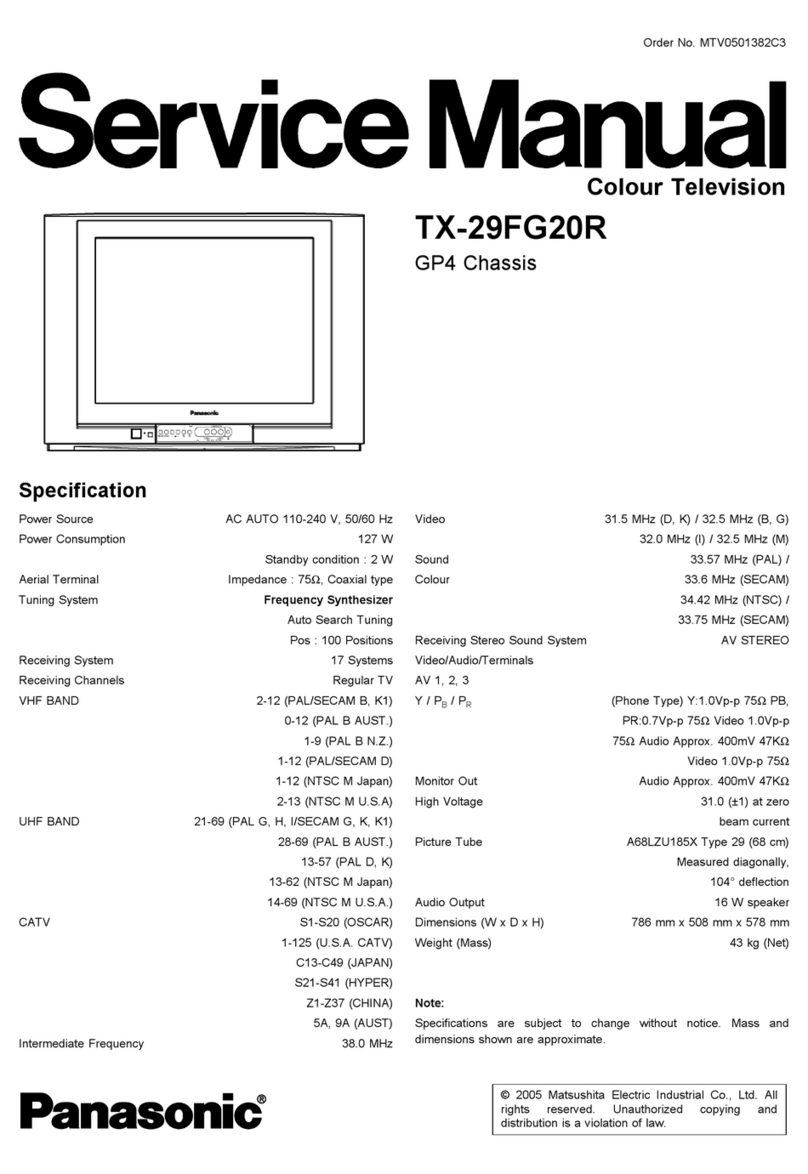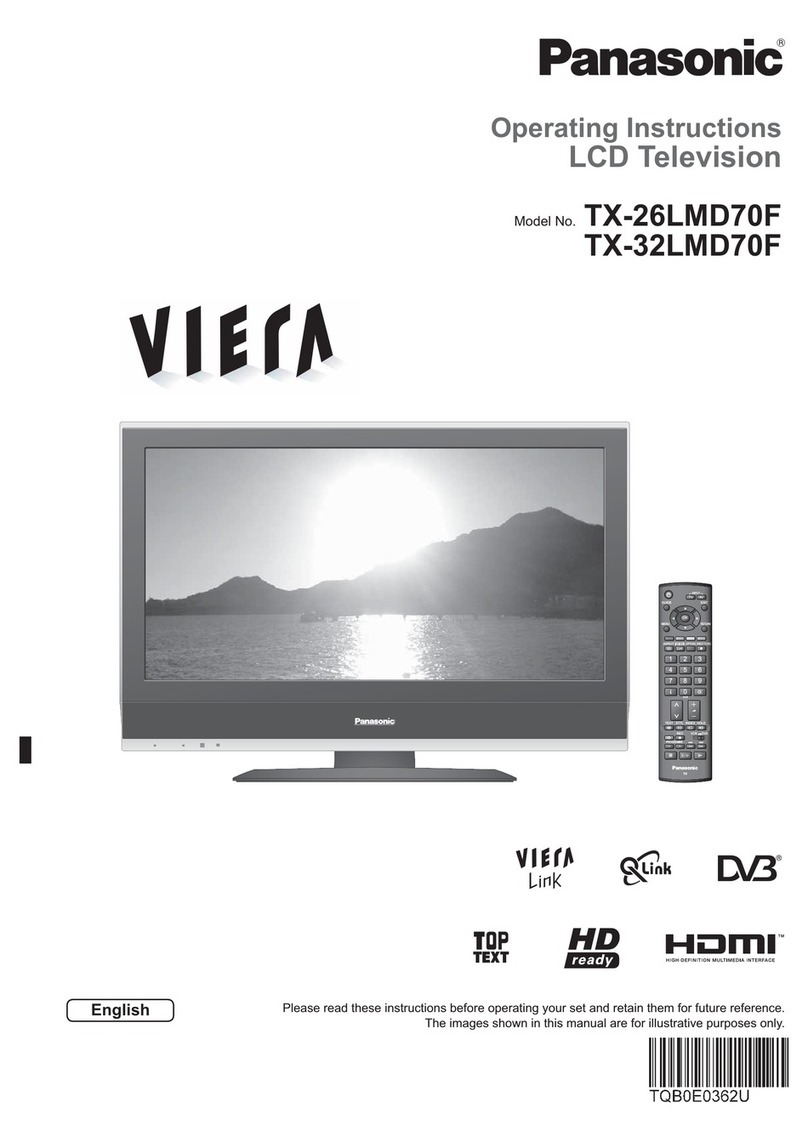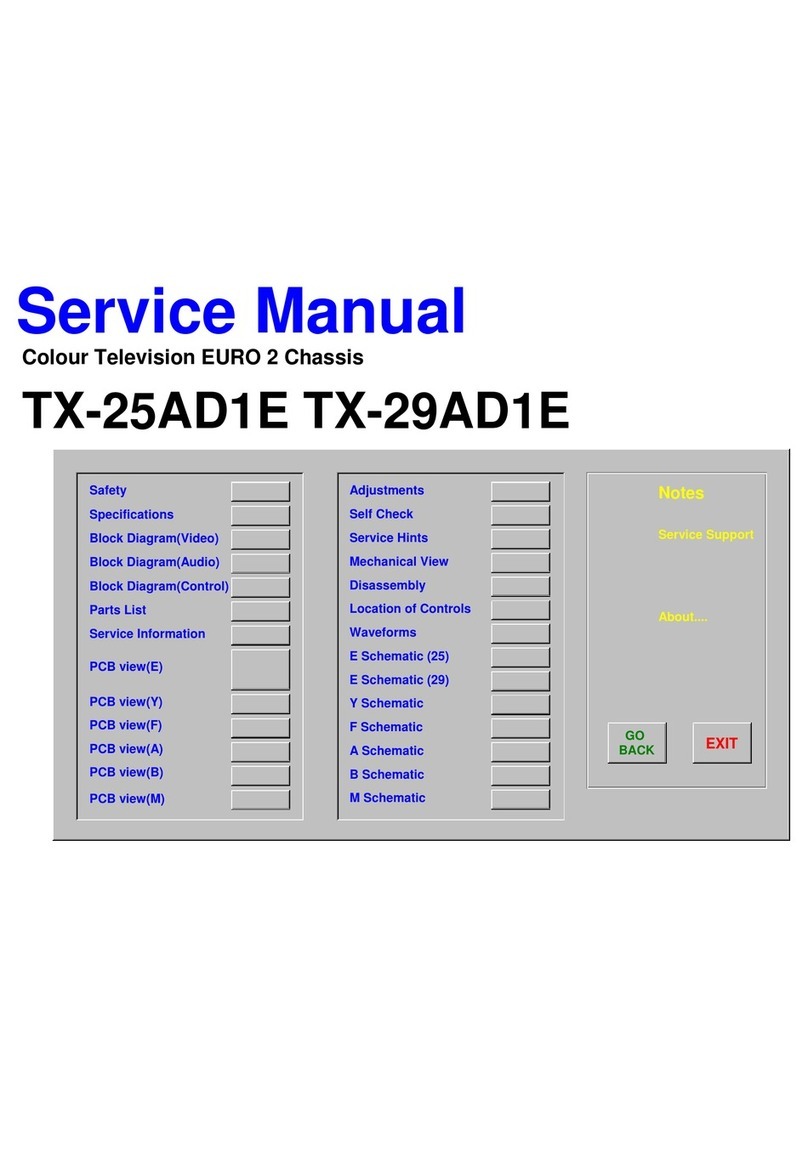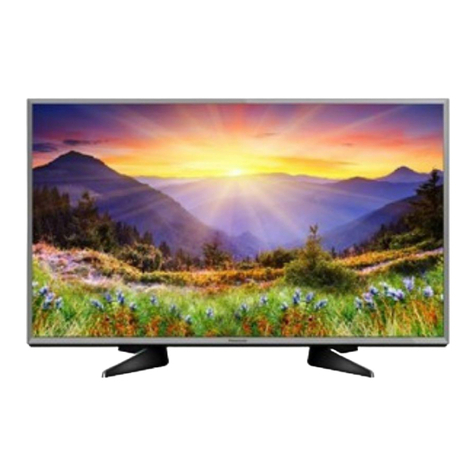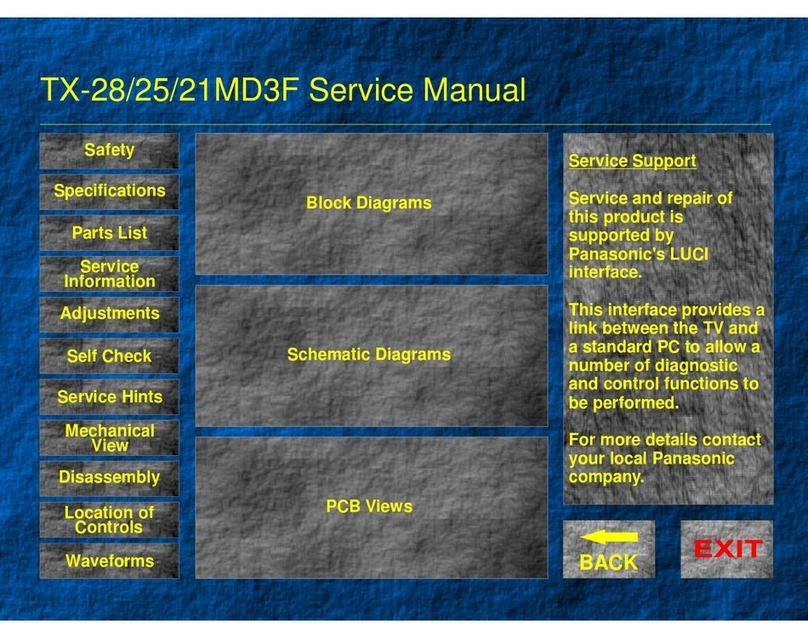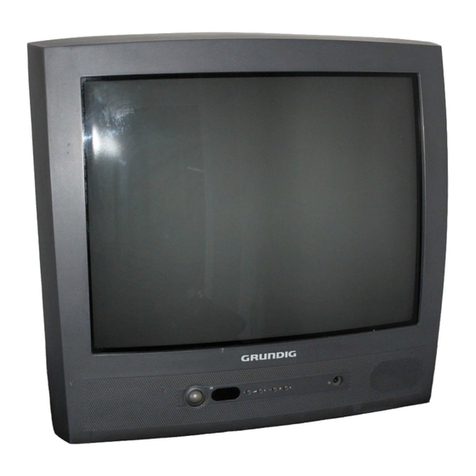TC-14A04A / TC-20A04A
- 2 -
General Guidelines
An Isolation Transformer should always be used during the servicing
of a receiver whose chassis is not isolated from the AC power line. Use
a transformer of adequate power rating as this protects the technician
from accidents resulting in personal injury from electrical shoc s. It will
also protect the Receiver from being damaged by accidental shorting
that may occur during servicing.
When servicing, observe the original lead dress, especially in the high
voltage circuit. Replace all damaged parts (also parts that show signs
of overheating.)
Always Replace Protective Devices, such as fishpaper, isolation
resistors and capacitors, and shields after servicing the Receiver.
Use only manufacturers recommended rating for fuses, circuit
brea ers, etc.
High potentials are present when this Receiver is operating. Operation
of the Receiver without the rear cover introduces danger from electrical
shoc . Servicing should not be performed by anyone who is not
thoroughly familiar with the necessary precautions when servicing high-
voltage equipment.
Extreme care should be practiced when Handling the Picture Tube.
Rough handling may cause it to implode due to atmospheric pressure
(14.7 lbs per sq. in). Do not sic or scratch the glass or subject it to any
undue pressure. When handling, use safety goggles and heavy gloves
for protection. Discharge the picture tube by shorting the anode to
chassis ground (not to the cabinet or to other mounting hardware).
When discharging, connect cold ground (i.e. dag ground lead) to the
anode with a well insulated wire or use a grounding probe.
Avoid prolonged exposure at close range to unshielded areas of the
picture tube to prevent exposure to X-ray radiation.
The Test Picture Tube used for servicing the chassis at the bench
should incorporate safety glass and magnetic shielding. The safety
glass provides shielding for the tube viewing area against X-ray radiation
as well as implosion. The magnetic shield limits X-ray radiation around
the bell of the picture tube in addition to restricting magnetic effects.
When using a picture tube test jig for service, ensure that the jig is
capable of handling 31 V without causing X-ray radiation.
Before returning a serviced receiver to the owner, the service technician
must thoroughly test the unit to ensure that is completely safe to operate.
Do not use a line isolation transformer when testing.
I portant Safety Notice
Special components are used in this television set which are important for safety. These parts are identified on the schematic
diagram by the symbol . It is essential that these critical parts are replaced with the manufacturers specified replacement
parts to prevent X-ray radiation, shoc , fire or other hazards. Do not modify the original design without manufacturers permission.
Warning !
It is essential that these critical parts are replaced
with the manufacturers specified replacement parts
to prevent X-ray radiation, shoc , fire or other haz-
ards.
Contents
OPERATING INSTRUCTIONS................................................................ 4
IC601 - PINOUT ................................................................................... 5
IC VOLTAGE TABLES .......................................................................... 6
IC601 - BLOCK DIAGRAM ................................................................... 7
GP3 CHASSI FEATURE SUMMARY ..................................................... 8
THEDACCONTROLFUNCTIONSFORTHEGP3CHASSIS................... 9
SERVICEMODE:
HOWTO ENTER IN THE SERVICEMODE.................................................9
TOEXITSERVICEMODEANDRETURNTONORMALMODE...................9
ADJUSTMENTS:
CHK1,CHK2,CHK3andCHK4ADJUSTMENTS OPTIONS ............... 9, 10
1- VIFDETECTOROUTPUT LEVEL CONFIRMATION......................... 11
3- BUZZINGCONFIRMATION (AUDIO CIRCUIT) ................................11
4- ANODEANDHEATERVOLTAGE CONFIRMATION ........................ 11
5- PAL COLOR OUTPUTLEVEL ADJUSTMENT ................................12
6- NTSCSUB-TINTCALIBRATION..................................................... 12
7- PROTECTIONCIRCUIT(SHUTDOWN)OPERATION)...................... 12
8- SUB-BRIGHTNESSANDSUB-CONTRASTCALIBRATION.............13
9- FOCUSCALIBRATION ................................................................... 13
10- COLOR PURITY ADJUSTMENT ...................................................... 13
11- WHITEQUALITYCALIBRATION..................................................... 14
12- CONVERGENCECALIBRATION......................................................14
14- CRT CUT OFF CALIBRATION ....................................................... 14
15- VERTICALDEFLECTIONCALIBRATION ........................................ 15
16- WITHE BALANCE CALIBRATION................................................... 15
EEPROMMEMORY MAPS ...................................................................16
SCHEMATICS DIAGRAMS:
CRTPCB SCHEMATICDIAGRAM ........................................................ 18
MAINPCB SCHEMATICDIAGRAM ...................................................... 19
MAIN PCB LAYOUT ............................................................................ 20
SIGNALWAVEFORMS........................................................................ 21
EXPLODEDVIEW ................................................................................. 25
PARTS LISTS:
REPLACEMENTMECHANICAL PARTSLIST........................................26
REPLACEMENTELECTRICALPARTSLIST..........................................27
